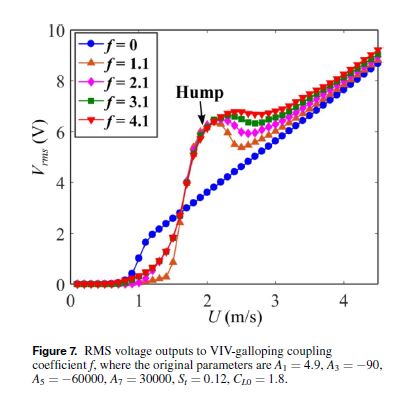Abstract:
This study performs a comprehensive parametric study and optimization of a piezoelectric wind energy harvester subjected to the conjunction of vortex-induced vibration (VIV) and galloping. The mathematical model of the harvester undergoing both the VIV and galloping is formulated, which is experimentally validated through the wind tunnel tests. The experimental results uncover that different combinations of the aerodynamic parameters of the model significantly influence the system dynamic behaviors. Changing the bluff body’s cross-section shape can alter the aerodynamic parameters. In the experiment, a unique hump phenomenon due to the coupled VIV and galloping is discovered, which significantly improves the voltage output. The influence of each aerodynamic parameter on the system performance is revealed, and the aerodynamic parameter’s effect is also mathematically interpreted by the terms in the governing equations. Finally, this study presents an effective structural optimization method based on the genetic algorithm (GA) to seek the optimal structural natural frequency matching up the given aerodynamic parameters. Results show that the piezoelectric wind energy harvester with the optimal designed natural frequency outperforms the harvester with other values, and the performance is also robust against a certain range of the parametric uncertainties.

.
Authors: Kai Yang, Kewei Su, Junlei Wang, Jinfeng Wang, Kai Yin and Grzegorz Litak
This paper was published in Smart Materials and Structures, Vol.29, (2020) 075035
To read full text, please visit publisher site or download pdf file.